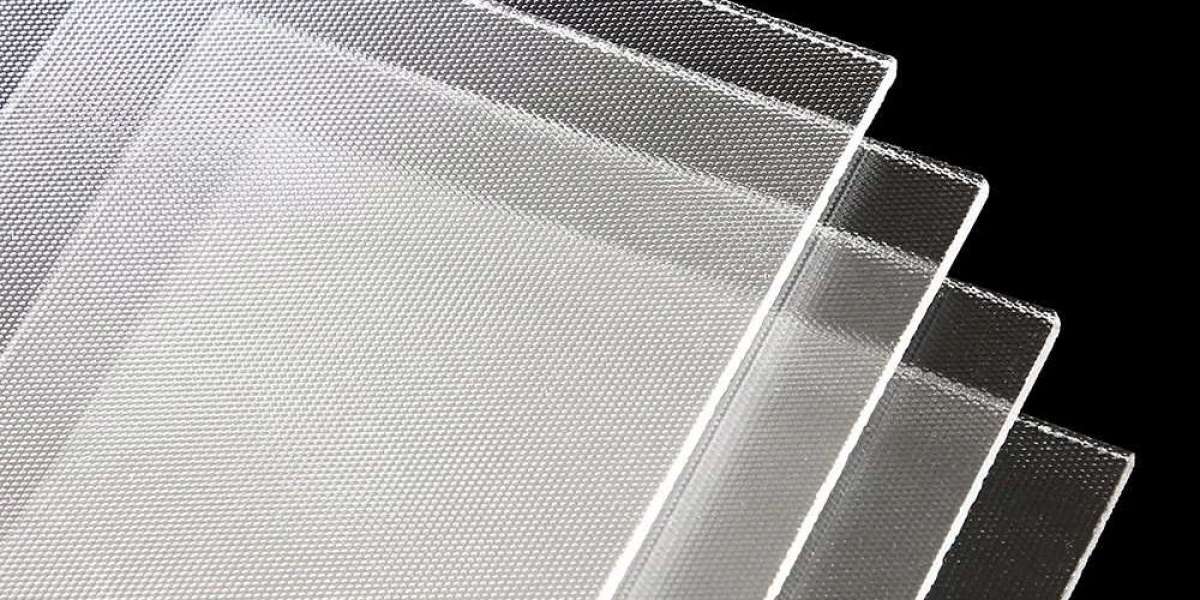In the era of sustainability and innovation, glass has become much more than a transparent barrier — it is now a key component in both modern agriculture and renewable energy. From helping plants grow efficiently in greenhouses to generating clean power through solar panels, glass technology has evolved dramatically. Advanced materials such as Clear Glass, Diffuse Glass, and AR Coating Glass are shaping the future of these industries. Understanding their unique roles can help businesses, farmers, and energy producers make informed decisions to maximize efficiency and performance.

1. Clear Glass – The Foundation of Efficiency
Clear Glass has been the cornerstone of both greenhouse and solar applications for decades. Known for its high transparency, clear glass allows maximum sunlight to pass through without distortion. In greenhouse systems, this direct light supports photosynthesis and promotes strong, healthy plant growth. Many farmers still prefer clear glass for crops that thrive under full-spectrum sunlight, such as fruits, vegetables, and ornamental plants.
In solar energy systems, clear glass serves as the protective layer for photovoltaic (PV) panels. It allows sunlight to reach the solar cells while shielding them from environmental factors like rain, dust, and temperature changes. Despite its simplicity, clear glass plays a vital role in ensuring both agricultural productivity and solar efficiency.
2. Diffuse Glass – Spreading Light for Balanced Growth
As agriculture and solar technology evolved, the need for more controlled and balanced light distribution became apparent. Diffuse Glass was developed to meet this challenge. Unlike clear glass, diffuse glass scatters incoming sunlight, ensuring that light is spread evenly throughout the greenhouse.
For greenhouse applications, diffuse glass eliminates shadows and prevents hotspots that can damage plants. This uniform light distribution improves crop yield, ensures consistent plant growth, and helps maintain stable internal temperatures. Studies show that crops grown under diffuse glass can achieve up to 10–20% higher productivity compared to those grown under standard clear glass.
In solar systems, diffuse glass also offers advantages under cloudy or indirect sunlight conditions. By capturing and scattering light, it ensures that solar panels generate power efficiently even when sunlight is not directly overhead.
3. AR Coating Glass – The Future of Light Efficiency
AR Coating Glass, or Anti-Reflective Coating Glass, represents the next stage of innovation in glass technology. Standard glass reflects about 8–10% of sunlight, which can reduce efficiency. AR coating glass solves this problem by minimizing reflection and maximizing light transmission.
In agriculture, AR coating glass allows more sunlight to penetrate greenhouses, boosting photosynthesis and reducing the need for artificial lighting. For solar energy systems, AR coatings enable more light to reach photovoltaic cells, increasing power output and overall system performance.
Additionally, AR coatings make glass surfaces easier to clean by repelling dust and moisture, which helps maintain long-term efficiency. This feature is especially important in outdoor solar farms or large-scale greenhouses exposed to varying weather conditions.
4. Solar Thermal and Solar PV Glass – Powering a Sustainable Future
Beyond greenhouses, advanced glass is essential in renewable energy. Solar Thermal Glass is designed to capture and retain heat efficiently. It’s commonly used in solar heaters and concentrated solar power (CSP) plants to convert sunlight into thermal energy for electricity or heating.
Meanwhile, Solar PV Glass plays a key role in photovoltaic panels, converting sunlight directly into electricity. These panels are often made using AR coating glass to enhance energy absorption and improve long-term performance. Together, these technologies are transforming how the world harnesses solar power — reducing carbon emissions and supporting global sustainability goals.
5. Greenhouse Glass – Blending Agriculture with Technology
Greenhouse Glass today is more than just transparent material — it’s an engineered solution that combines clear, diffuse, and AR coating technologies. Many modern greenhouses use multilayered or hybrid glass systems that balance light diffusion, thermal insulation, and UV control. This not only enhances crop productivity but also reduces heating and cooling costs, making agriculture more energy-efficient and environmentally friendly.
Conclusion
From Clear Glass to AR Coating Glass, the evolution of glass technology has redefined both agriculture and renewable energy. Each type—clear, diffuse, solar thermal, and solar PV glass—serves a unique purpose in improving light management, energy efficiency, and sustainability.
For greenhouse growers, selecting the right glass means healthier plants, better yields, and reduced operational costs. For solar energy producers, advanced glass technology translates to higher energy output and long-term reliability.
As the world continues to embrace sustainable development, investing in the right glass technology is not just a technical decision—it’s a commitment to a brighter, greener future where agriculture and energy innovation work hand in hand.



